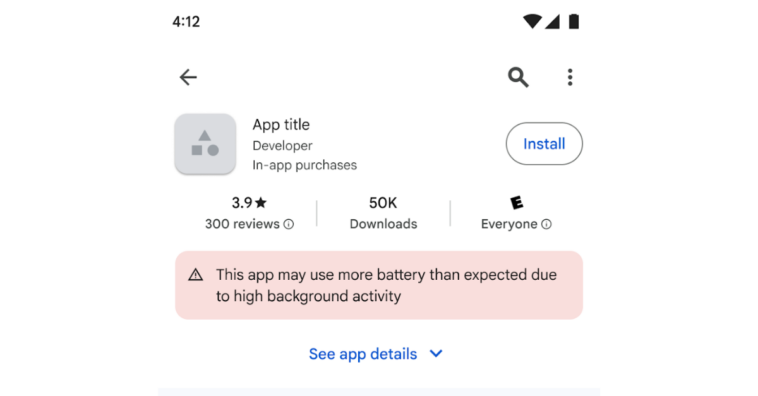Google is introducing new guidelines that will flag and restrict apps that significantly drain device battery life, with enforcement set to begin on March 1, 2026. The policy targets apps that misuse “wake locks,” a mechanism that keeps a device awake to perform background tasks, even when the screen is off.
A new Android vitals metric, developed in collaboration with Samsung, will measure how often apps keep devices awake without clear user benefit. Google defines excessive usage as more than two cumulative hours of non-exempt wake locks in a 24-hour period. If at least 5% of an app’s user sessions over a 28-day period exceed that threshold, the app will be flagged.

Apps that cross this threshold may lose placement in key Play Store discovery areas, such as recommendation lists. In some cases, a warning label will be added directly on the app’s store listing, informing users that the app “may use more battery than expected due to high background activity.”
The change adds battery performance to Google Play’s existing set of core technical quality metrics, which already include app crash rates and “application not responding” (ANR) rates. The new wake-lock metric is now visible to developers in Android vitals, allowing them to analyze and adjust their apps before enforcement begins next year.
Google says the update is intended to influence both developer practices and user awareness. Developers are encouraged to review wake-lock behavior using the new diagnostic breakdowns in Android Studio and documentation on best practices. Users, meanwhile, will gain clearer insight into whether an app could meaningfully impact day-to-day battery life.
Google has signaled that additional resource-use metrics may be introduced in the future as part of continued Play Store quality enforcement.







Comments
Loading…